The cool breeze coming from your kitchen cabinets can cause discomfort every time you enter and stay in the kitchen. The best way to prevent it is by insulating your kitchen cabinets, but how can you accomplish it? We’ve done comprehensive research to help you get it done!
You can spray foam or apply injection foam to insulate your kitchen cabinets. Spray foam is great for open spaces, while injection foam is for closed cavities. Both provide superior airtight seals that cannot be easily broken.
However, experience and the right tools are required to get this job done. If you want to learn how to do it yourself, as well as these materials' advantages and disadvantages, read on! Those are topics that this post is going to discuss in the sections below.
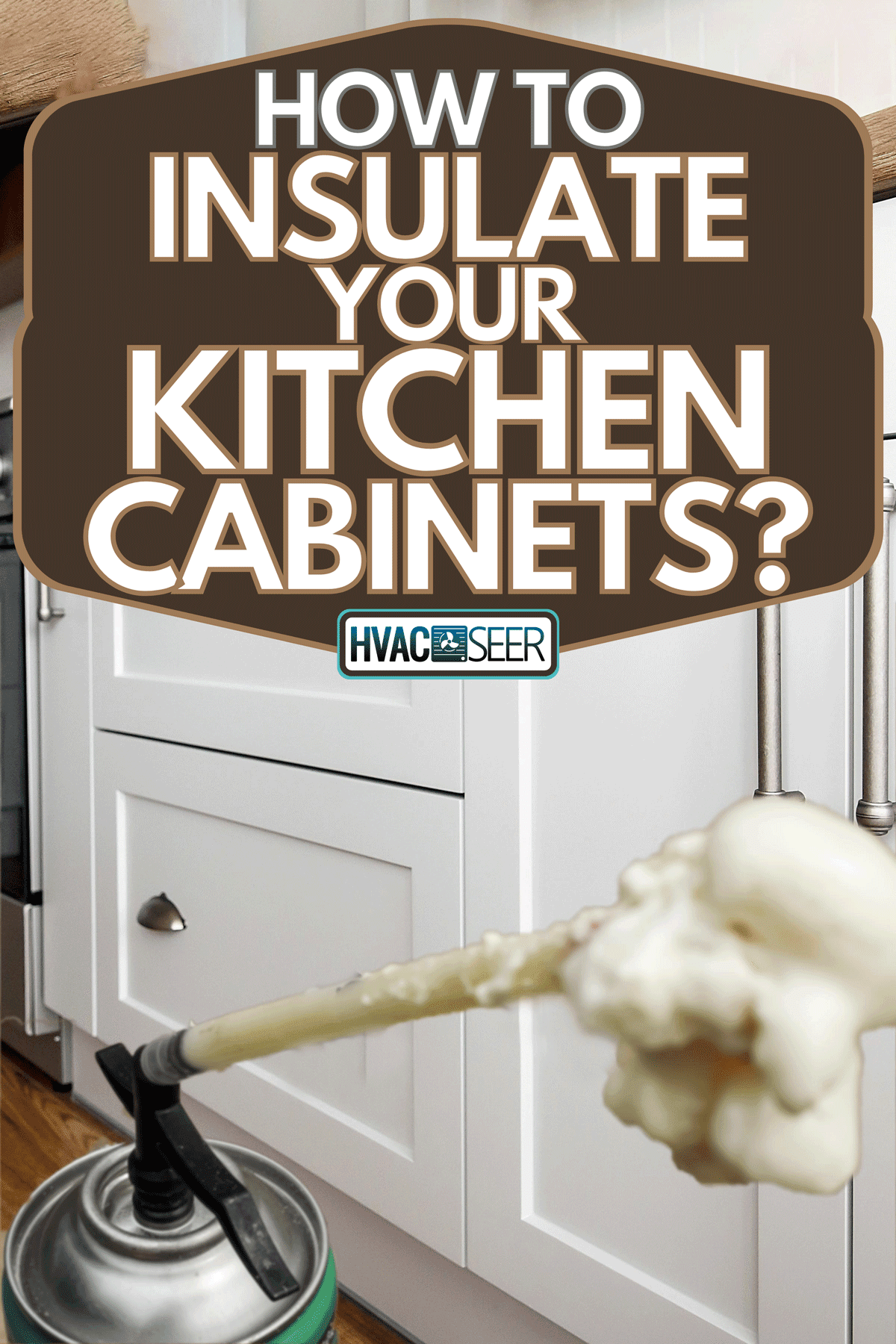
Why Are Your Kitchen Cabinets Cold?
Draft coming from your kitchen cabinets is the price of little or poor insulation on the wall where they are installed. It can also be caused by the gaps and crevices brought about by recent home renovation.
Not of least to mention causes such as plumbing and electrical wiring. These let air and vapor through your kitchen cabinets, making them cold inside and out. That's when insulation comes in!
Why Insulate Your Kitchen Cabinets?
Aside from keeping intrusive air out, here are the other known advantages of insulating your kitchen cabinets:
Lowers Electricity Bill
With cold air eliminated from your kitchen cabinets, you can now cook and prepare food without AC, which can cut down your electricity bill.
Blocks Noise
Insulation also filters and traps internal and external noise, making your kitchen a quiet spot.
Maintains Consistent Temperature
Insulation keeps your kitchen warm when it's’ freezing and cool when it’s hot. Also, it prevents food from getting spoiled because the cabinet temperatures are less likely to fluctuate, storing at the right temperature.
Prevents Mold and Damage
Air moisture can penetrate the wall, leading to mold and mildew infestation. And mold and mildew can cause your wall to collapse over time and potentially cause several health problems such as allergy and skin irritation.
What Are The Best Ways To Insulate Kitchen Cabinets?
Traditional insulation methods, including fiberglass and cellulose, cannot guarantee air seals on kitchen cabinets, but spray foam and injection foam certainly can!
What Is Spray Foam?
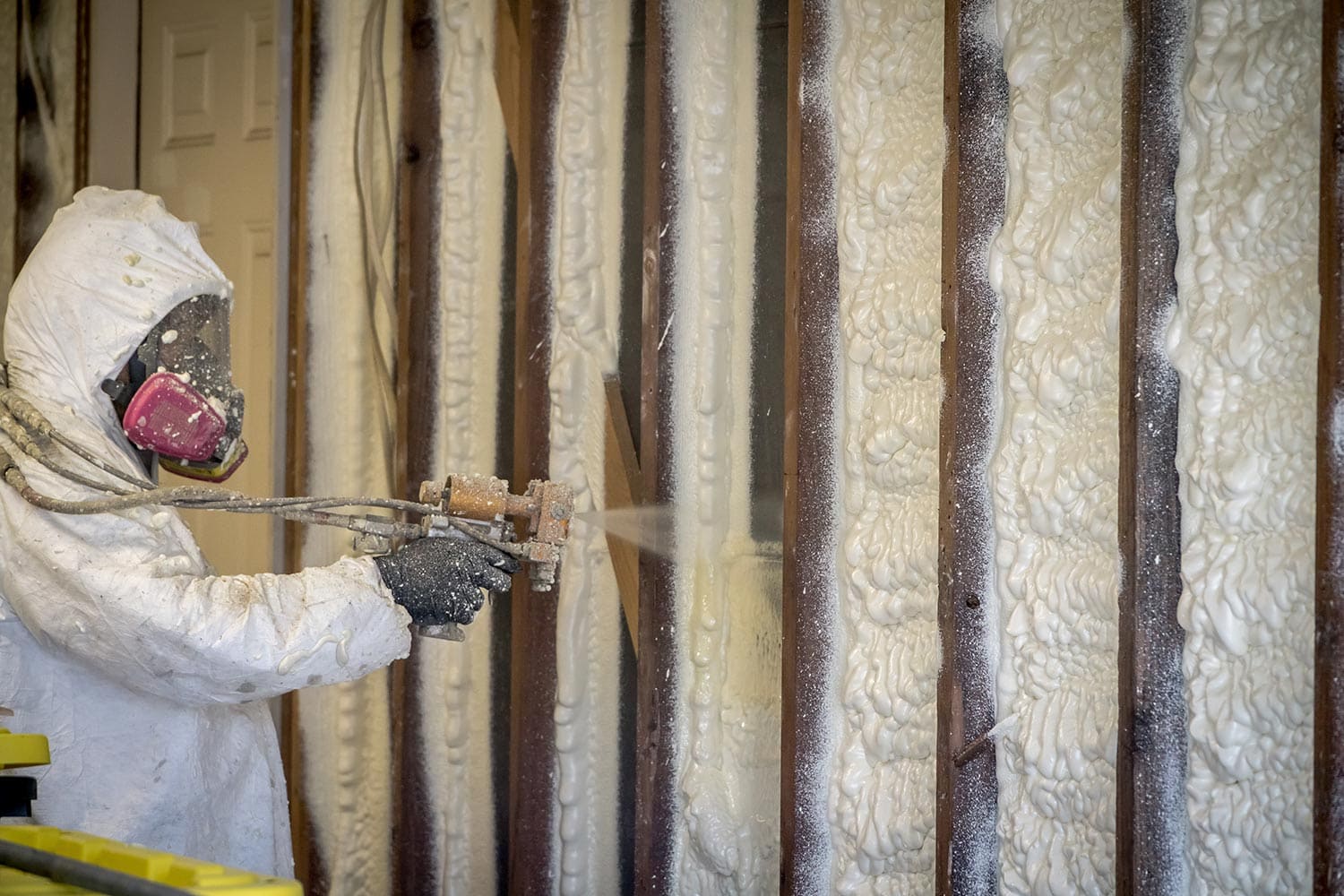
Spray foam is a liquid mixture made of polyol resin and isocyanate that expands as it cures. You spray it on the area you want to insulate to seal gaps, cracks, and holes.
It has two different categories: open-cell and closed-cell. Open-cell has structures that have been left completely exposed; hence, they're softer and more flexible.
On the other hand, closed-cell, as the name implies, is enclosed within the drywall, and therefore it is more rigid and impenetrable.
What Is The R-Value Of Spray Foam Insulation?
The R-value refers to the thermal resistance of the insulation material. The higher the R-value, the better. Open-cell has R-3.8 per inch, lower than closed-cell with R-7 per inch.
How Much Does Spray Foam Insulation Cost?
Please see the table below, provided by HomeAdvisor, for breakdown of price differences:
| Foam Type | Materials/Board-foot | Installation/Square-foot |
| Open-cell | $0.44 - $0.65 | $1.50 - $4.90 |
| Closed-cell | $1.00 - $1.50 | $1.50 - $4.90 |
What Is Injection Foam?
This is the insulation used to fill cavities in enclosed or existing walls. It serves as a physical barrier, maximizing the efficiency of your home. With it, you could save up to 20% on your energy consumption!
What Is The R-Value Of Injection Foam Insulation?
It has 4.6 R-value per inch. But studies show that it goes higher as the temperature gets low. At 30 degrees, injection foam insulation's R-value can reach up to 5 per inch.
How Much Does Injection Foam Insulation Cost?
Injection foam insulation is much more expensive compared to other insulation products. A 1,500 square foot wall can cost anywhere between $4,000 to $8,000, depending on the material used.
Steps To Insulate Your Kitchen Cabinets
Spray Foam
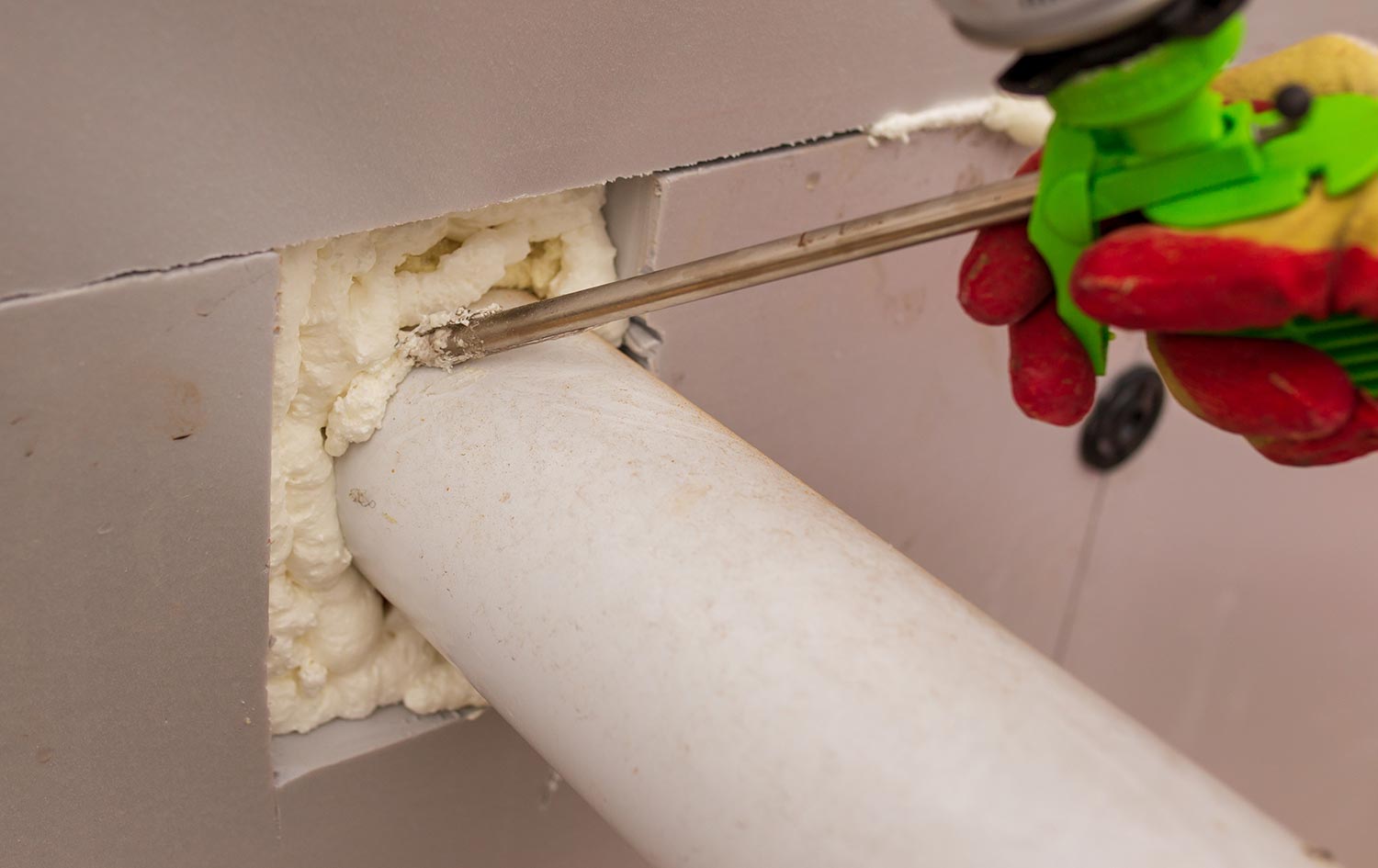
Spray foaming your kitchen cabinets is demanding. So more often, it's best to leave it to professionals. However, you can try to do it yourself using a DIY spray foam kit you can purchase at local stores.
Check out this product on Amazon.
Note that DIY spray foam only works on open spaces; if you're planning to insulate an enclosed wall, ask the help of experts as it requires cutting through the wall. But will all that said, here’s how to spray foam kitchen cabinets.
- Identify the area where the draft comes from.
- Read the instructions on the DIY spray foam kit.
- Check if the canister is firmly hooked up and ensure that there's no backup in the gun that can ruin the mixture.
- Protect the surrounding area with old magazines or newspapers to get the mixture to where you want it to be. Spray foam can be hard to remove once sprayed!
- Spray the mixture and avoid pausing longer than 30 seconds because the nozzles will get clogged. Prepare extra nozzles if necessary.
- Allow the material to cure. If you overfill, trim it with a utility knife.
Important reminder: Spray foam can pose health risks prior to the curing process. The Environmental Protection Agency (EPA) suggests leaving the house for at least 24- 72 hours. But once it’s dried up, it is already safe.
Injection Foam
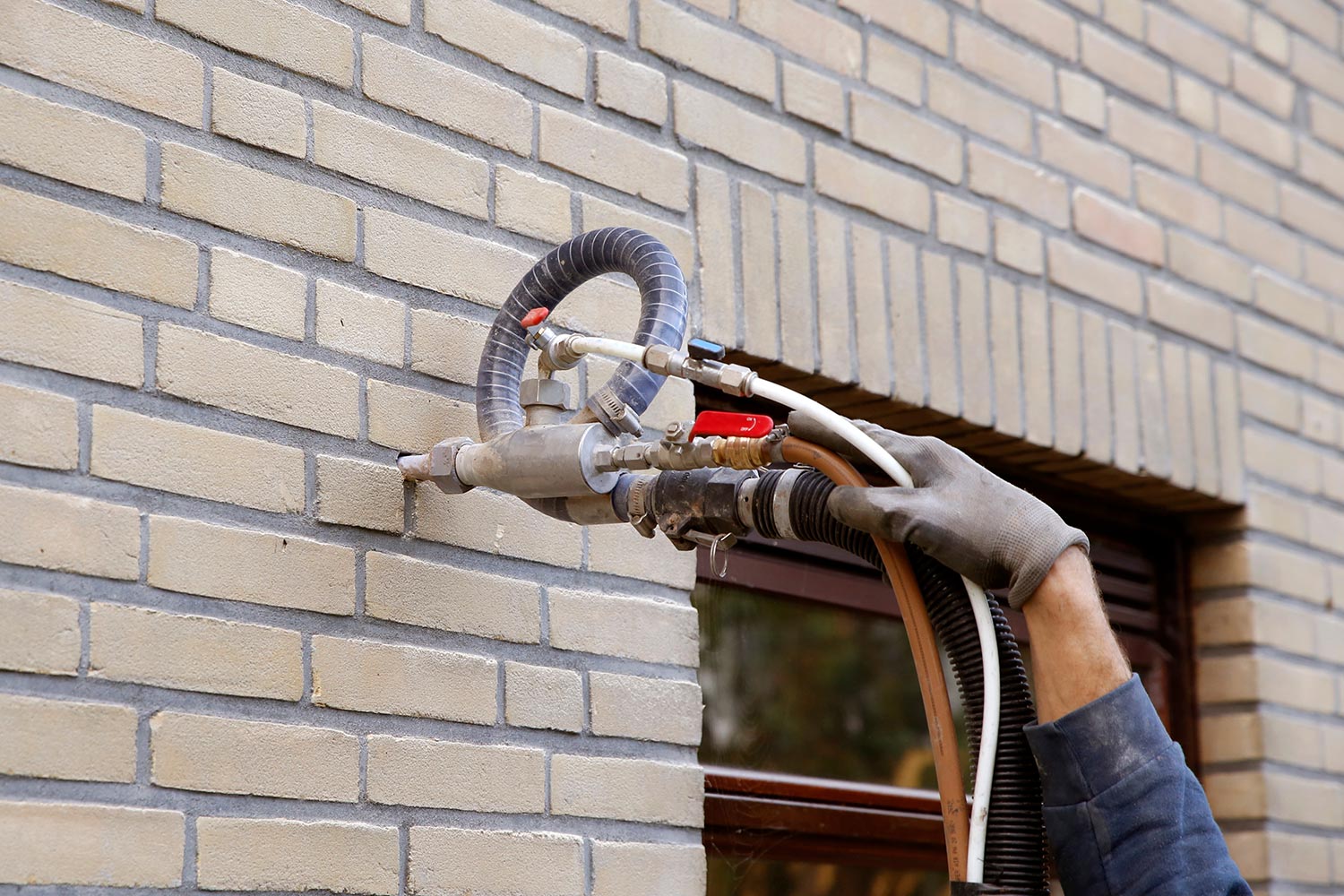
You can use spray foam or Retrofoam mixture; the only difference is the way you will apply it. You can inject it on the back of the wall without having to tear cabinets down.
- Locate the stud where you want to place the insulation. You may have to remove the siding. Trace the studs’ width first for an easy application. Typically, they are about 15 to 20 inches away from each other.
- Mark the area on the wall where you will drill holes. Allow 7 to 10 inches distance between the holes and bolts. While drilling holes, look out for electrical wiring on the wall that can get damaged.
- Insert the pipe and ensure that the nozzle is pointing downward.
- Wrap a cloth or towel around the crack to prevent the mixture from blowing when you start filling the cavities.
- Place a spool of insulation within the studs once the blower runs.
- Stop blowing as soon as the mixture goes back up.
- Patch the wall with a drywall repair kit. Let the mixture dry up first before repainting it.
How Long Do Spray Foam And Injection Foam Insulations Last?
With proper application and maintenance, spray foam and injection foam insulations can last for 80-100 years. The mixtures stick tightly to surfaces and retain rigidity once cured. However, an incorrect application can cause early deterioration and a shorter lifespan.
Safety Tips During Insulation
Wear Protective PPEs
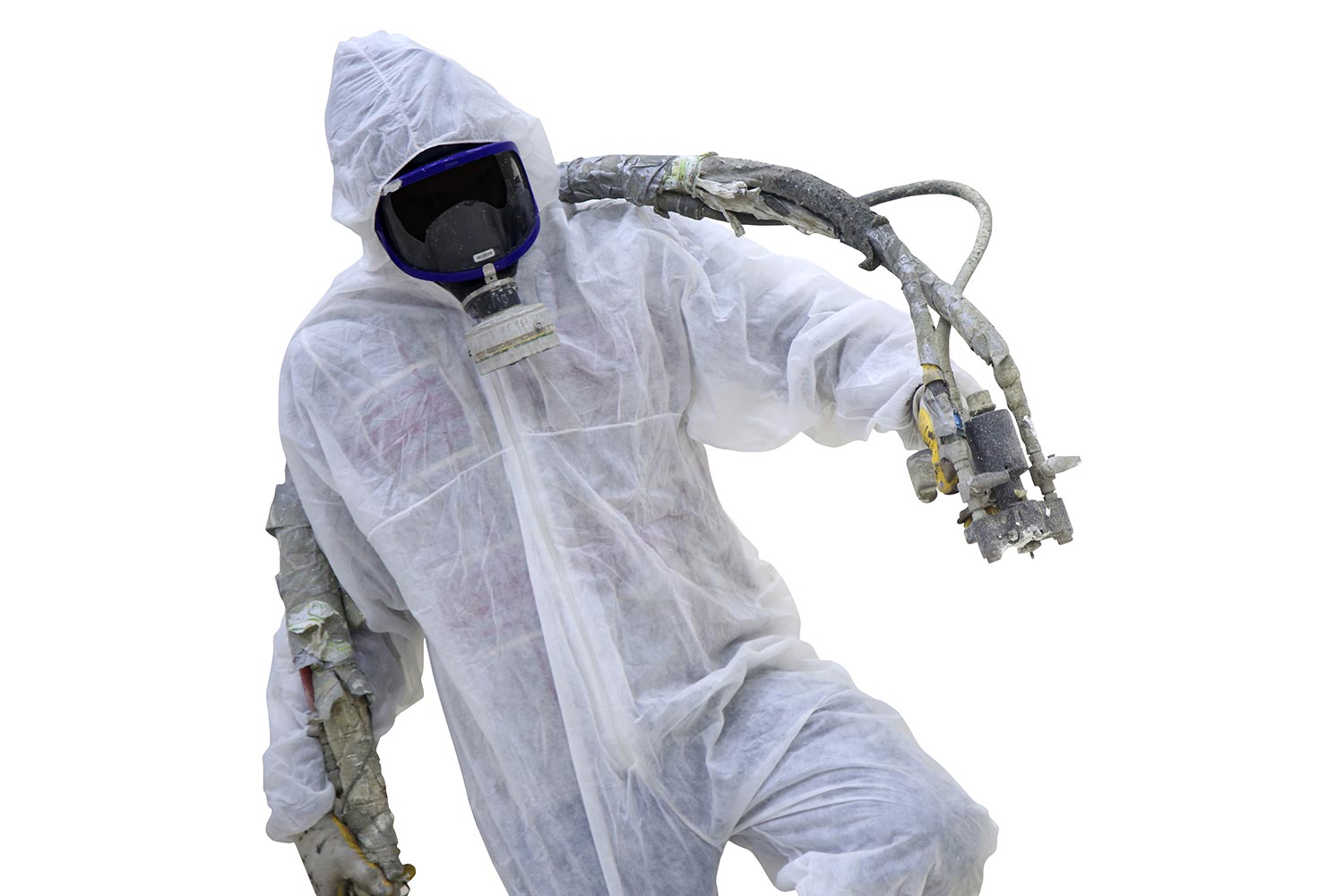
Wear protective overalls, goggles, masks, and gloves during the insulation to avoid inhaling and getting in contact with the chemical before it cures.
Keep Away Flammable Substance
Spray foam is combustible, so keep it away from any source of heat or flame to avoid accidents.
No Eating or Drinking
Avoid eating or drinking in the kitchen because the foods and drinks can carry food particles to your body.
Pros And Cons Of Spray Foam And Injection Foam Insulations
Spray Foam
Pros
- Provides airtight seal that’s second to none.
- Stable. It stays in place even when your home shifts over time due to cracks and crevices on the foundation.
- Can be left exposed without the structure getting damaged.
- Blocks external noise.
- Cuts down the energy bill.
- Impermeable, hence, prevents mold and mildew infestation.
- Lasts for decades.
Cons
- Costly.
- Requires experience and the right equipment to get done.
- Poses health risks and side effects when not applied correctly.
- Takes time to cure.
Injection Foam
Pros
- Can be installed without removing existing walls and concrete.
- Ensures consistent temperature at home even without a heater.
- Non-toxic and eco-friendly.
- Creates superior air and vapor barrier.
Cons
- May not completely fill some cavities in the wall.
- Expensive, just like the spray foam insulation.
- Too much pressure during the application can damage the wall.
Conclusion
Gaps and crevices under and behind your kitchen cabinets can result in a drafty kitchen. Spray foam and injection foam are the best options to insulate them. These methods require experience and the right equipment to accomplish, but you may also try to do them yourself using a DIY spray foam kit.
Ask the assistance of a professional who can assess your kitchen cabinets and apply the insulation materials without damaging your exterior walls, if necessary.

